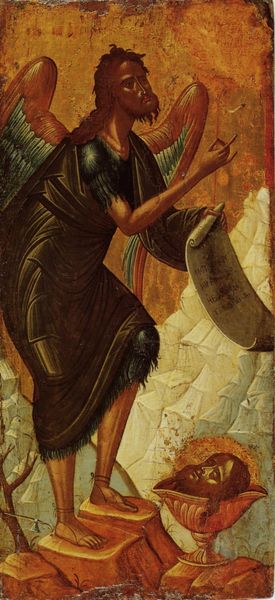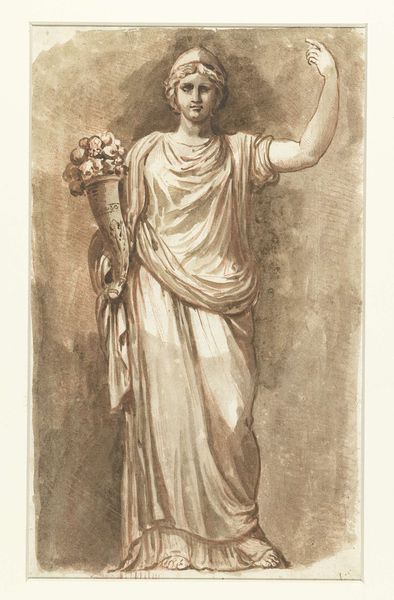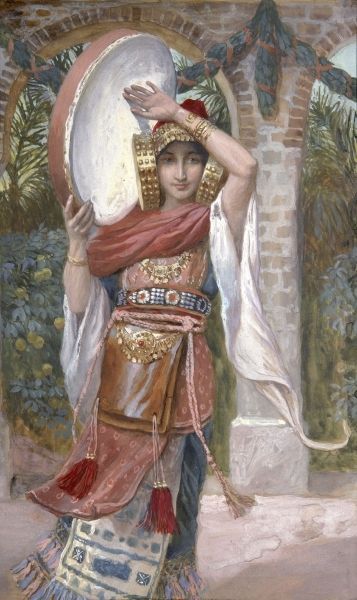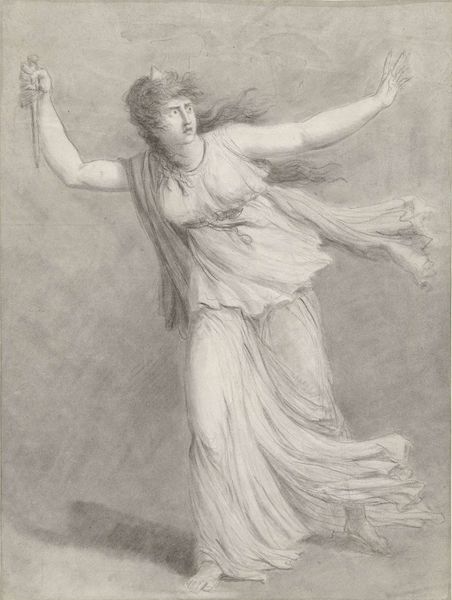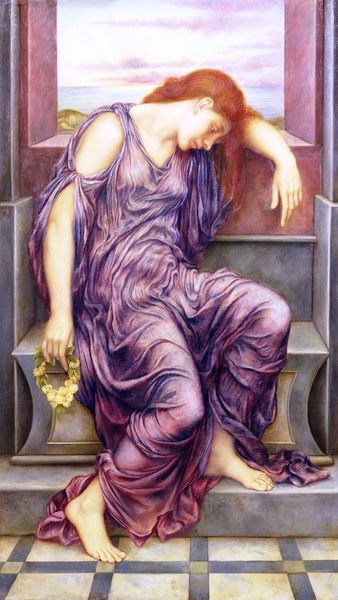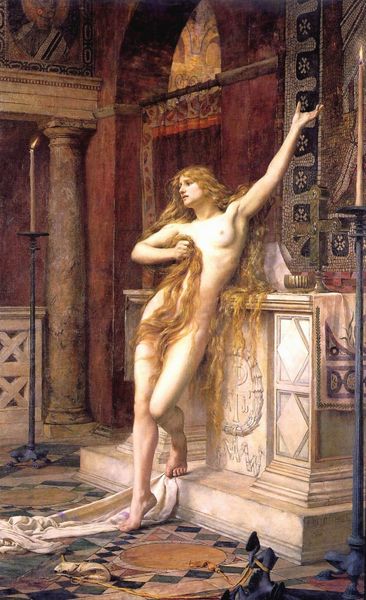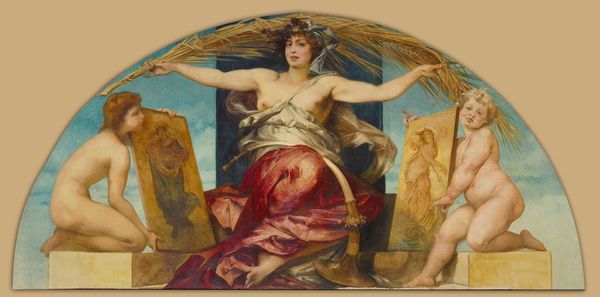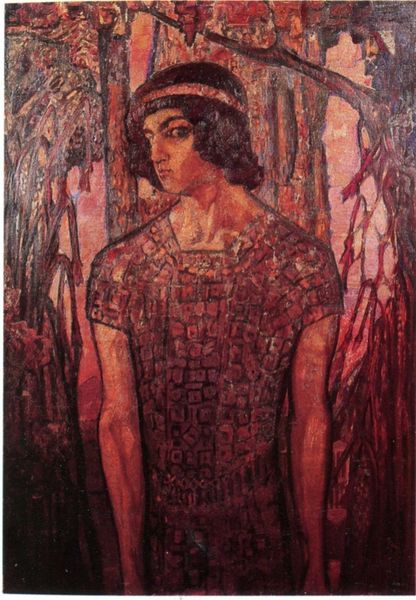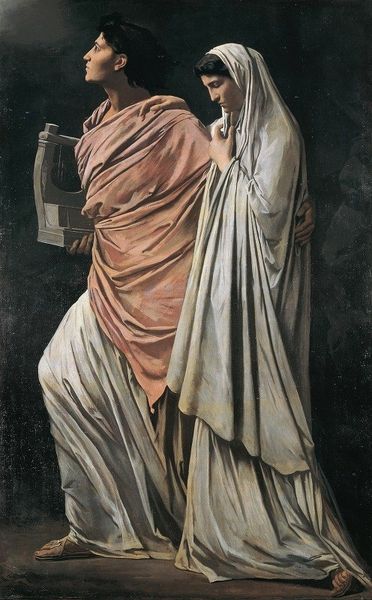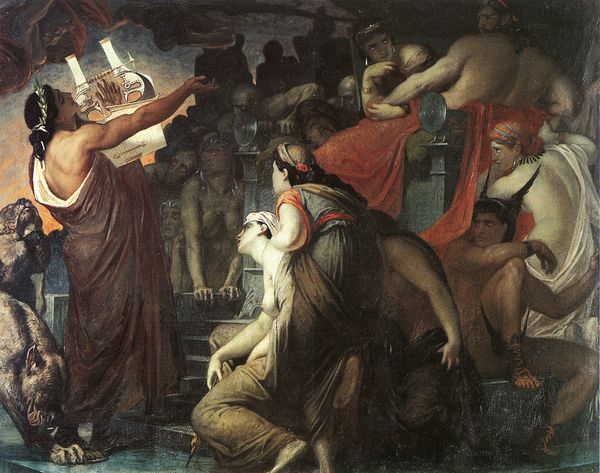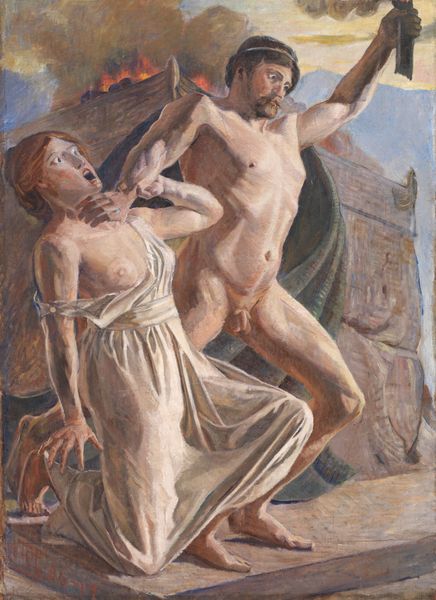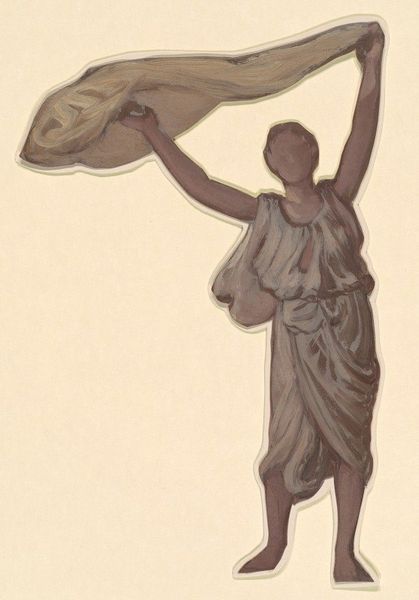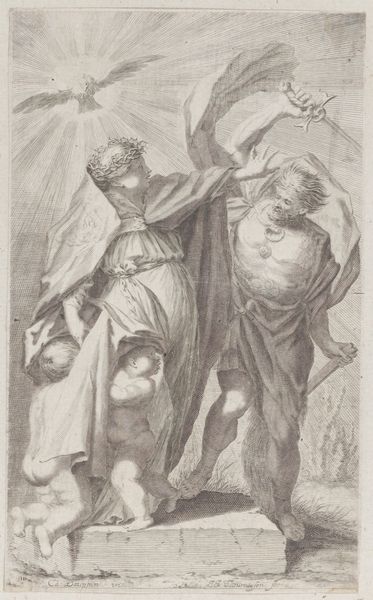
Dimensions: support: 1555 x 914 mm frame: 1875 x 1230 x 90 mm
Copyright: CC-BY-NC-ND 4.0 DEED, Photo: Tate
Editor: Watts' depiction of "Jonah" is striking; the figure's raw emotion and gesture dominate the canvas. What symbols or interpretations resonate with you in this work? Curator: Jonah’s raised arms are a universal symbol of supplication, defiance, or even rebirth. Note the bas-relief behind him - are those scenes from his past, premonitions, or simply decorative? Editor: I see them as mirroring his internal struggles, a visual echo of his journey. Curator: Precisely. Watts uses Jonah to explore themes of repentance and divine will. He presents the prophet not as a passive recipient of fate, but an active participant grappling with his destiny. Consider the whale’s absence – is it a literal or symbolic omission? Editor: Perhaps it's about the internal struggle, not the external event, which makes sense. Thanks for clarifying all the imagery! Curator: It shows how artworks reflect our collective memory and shared cultural narratives!
Comments
Join the conversation
Join millions of artists and users on Artera today and experience the ultimate creative platform.
tate 7 months ago
⋮
In this dramatic image Watts presents the gaunt Old Testament prophet Jonah warning the Ninevites to repent of their behaviour. The sins he denounces are shown in three parallel friezes, based on sculptures from the walls of Nebuchadnezzar’s palace: gambling, drunkenness, and greed – indicated by a group of figures crawling up to the money bags scattered on the floor. Gallery label, September 2004
